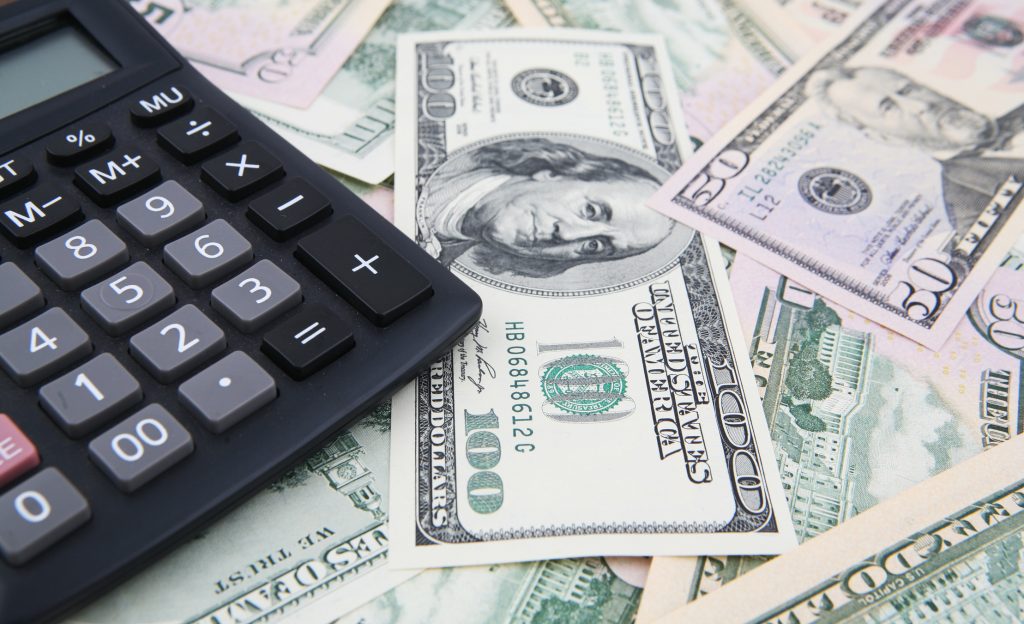Currency exchange rates are commonplace for travelers, bankers, international investors, and businesses with global trade. For people not involved in these fields, an exchange rate may seem a bit confusing. Before we look at how to read and calculate currency exchange rates, it is necessary first to define what it is.
An exchange rate is the amount of one currency you need to buy another currency. For example, if you have 100 US dollars and want to buy Euros, how many Euros will you get for your money? Looking at the Euro and USD exchange rate will give you this information.
But which exchange rate should you consider? EUR/USD or USD/EUR?
How to Read Exchange Rates

Exchange rates are written as currency pairs.
For example:
- USD/EUR (US Dollar/European Euro)
- USD/CAD (US Dollar/Canadian Dollar)
- USD/AUD (US Dollar/Australian Dollar)
- USD/JPY (US Dollar/Japanese Yen)
- USD/GBP (US Dollar/British Pound)
In these pairs, the first currency (USD in this case) is called the base currency and the second currency (in this case Euro, Canadian Dollar, etc.) is called the term currency or quote currency.
Let’s say you see a currency exchange rate saying USD/EUR is 0.88, what does this mean?
It means that you need 0.88 Euros to buy 1 US dollar.
Going back to the currency pair, the rate is read as how much of the second currency (quote currency) is needed to buy one unit of the first currency (base currency). In this case, to reiterate, you need 0.88 Euros to buy 1 US dollar.
What if you see a rate written EUR/USD?
You can apply the same process to read this currency pair: how many US dollars do you need to buy 1 Euro. In this case, the exchange rate is 1.13. That is, you need 1.13 US dollars to buy 1 Euro.
You can use the same method to determine the value of all the other pairs:
- USD/CAD (The number of Canadian dollars you need to buy 1 US Dollar)
- USD/AUD (The number of Australian dollars you need to buy 1 US Dollar)
- USD/JPY (The number of Japanese Yen you need to buy 1 US Dollar)
- USD/GBP (The number of British Pounds you need to buy 1 US Dollar)
Now that you know how to read a currency exchange rate let us now turn to how to calculate the exchange rate.
How to Calculate Exchange Rates
The best way to understand how to calculate an exchange rate is to use an example.
Let’s say you run a business in the United States that relies on international suppliers. One of your suppliers, who is in Australia, sent you a shipment worth $35,000 Australian Dollars. How many US dollars should you send them to cover the amount?
AUD/USD
In this case, should you look for the USD/AUD rate or the AUD/USD rate? It may sound confusing, but there is an easy way to approach it. Since your supplier wants to be paid in Australian Dollars, you need to buy that currency with your US dollars.
That means you need to find out how many US dollars you need to buy one Australian dollar. Since the Australian Dollar unit is one, then it is the base currency (i.e., the first currency in the pair).
Thus, you will write the pair as AUD/USD, which asks how many USD you need to buy one AUD.
Now go to a currency exchange quote provider online like XE.com and look for the AUD/USD exchange rate.
Currently, it is 0.7.
That means you need 0.7 USD dollars to buy 1 Australian dollar.
Now, multiply the amount you owe by 0.7
$35,000 x 0.7 =$ 24,500
You need $24,500 US dollars to purchase and send $35,000 Australian dollars.
Reversing the Calculation
What if you are the supplier and are owed $35,000 USD by an Australian business?
They would simply reverse the currency pair to USD/AUD (how many Australian dollars are needed to buy 1 US dollar)
In this case, they would need to spend AU$1.43 for every dollar they buy.
$35,000 x 1.43 = $50,000
They would need to spend AU$50,000 to buy and send you US$35,000
A Word on Spreads
When calculating currency exchange rates, it is essential to factor in spreads. Spreads are the extra margin (or percentage points) brokers add to each transaction. Spreads are the reason the rate your local banks quote you will always differ from what you see on the Internet. When calculating and negotiating exchange rates, always keep in mind that these spreads can be quite high and can influence how much of another currency you get for your money.



